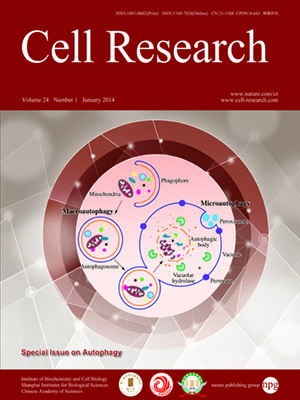
Volume 24, No 1, Jan 2014
ISSN: 1001-0602
EISSN: 1748-7838 2018
impact factor 17.848*
(Clarivate Analytics, 2019)
Volume 24 Issue 1, January 2014: 92-104
REVIEWS
Chaperone-mediated autophagy: roles in disease and aging
Ana Maria Cuervo1 and Esther Wong2
1Department of Developmental and Molecular Biology, Institute for Aging Studies, Marion Bessin Liver Research Center, Albert Einstein College of Medicine, 1300 Morris Park Avenue, Chanin Building 504, Bronx, NY 10461, USA
2School of Biological Sciences, Nanyang Technological University, SBS-03n-05, 60 Nanyang Drive, Singapore 637551, Singapore
Correspondence: Esther Wong, Tel: +65-6316-2848; Fax: +65-6791-3856(EstherWong@ntu.edu.sg)
This review focuses on chaperone-mediated autophagy (CMA), one of the proteolytic systems that contributes to degradation of intracellular proteins in lysosomes. CMA substrate proteins are selectively targeted to lysosomes and translocated into the lysosomal lumen through the coordinated action of chaperones located at both sides of the membrane and a dedicated protein translocation complex. The selectivity of CMA permits timed degradation of specific proteins with regulatory purposes supporting a modulatory role for CMA in enzymatic metabolic processes and subsets of the cellular transcriptional program. In addition, CMA contributes to cellular quality control through the removal of damaged or malfunctioning proteins. Here, we describe recent advances in the understanding of the molecular dynamics, regulation and physiology of CMA, and discuss the evidence in support of the contribution of CMA dysfunction to severe human disorders such as neurodegeneration and cancer.
10.1038/cr.2013.153
FULL TEXT | PDF
Browse 1993


